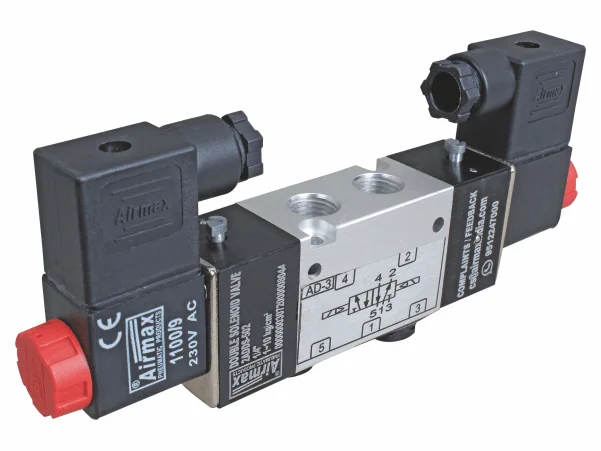Proper maintenance of directional control valves is essential for the reliability and efficiency of pneumatic and hydraulic systems. These valves control the flow and direction of fluids, playing a pivotal role in various industrial applications. Regular maintenance includes cleaning, lubrication, and inspection for wear and tear. Neglecting maintenance can lead to valve malfunctions, leaks, and system failures, potentially causing costly downtime and safety risks. By prioritizing the upkeep of directional control valves, you ensure the smooth operation of your machinery, prolong the valves' lifespan, and minimize the chances of unexpected breakdowns.
Friday, October 13, 2023
The Importance of Properly Maintaining Directional Control Valves
System reliability is a critical concern in industrial applications where directional control valves are utilized. These valves play a central role in regulating the flow and direction of fluids in hydraulic and pneumatic systems. The importance of maintaining them cannot be overstated. Regular maintenance not only keeps the valves functioning optimally but also enhances overall system reliability.
When directional control valves operate smoothly, it minimizes the risk of system failures and disruptions, which can be particularly costly in industries where production processes are continuous and downtime is expensive. A well-maintained valve system contributes to enhanced productivity, meeting production targets consistently.
Downtime in industrial settings is a costly affair, and unexpected equipment failures, including those related to directional control valves, can lead to extensive financial losses. By proactively maintaining these valves, you can significantly reduce the risk of unplanned downtime.
Proper maintenance involves routine inspection, cleaning, and lubrication. Addressing issues before they escalate, such as valve wear, leaks, or blockages, helps avoid costly repairs and production delays. The financial savings achieved through preventive maintenance significantly outweigh the costs associated with downtime and emergency repairs.
Safety is paramount in industrial environments. Neglecting the maintenance of directional control valves can lead to hazardous situations. Leaks, malfunctions, or valve failures may pose risks to both equipment and personnel.
Maintained valves are less likely to malfunction unexpectedly, reducing the potential for accidents. Additionally, by adhering to maintenance protocols, you ensure that valves operate within safety parameters, contributing to a safer work environment.
Directional control valves are investments, and protecting that investment is crucial for businesses looking to manage costs. Routine maintenance extends the lifespan of these valves. By addressing wear and tear, cleaning components, and replacing parts as necessary, you ensure that your directional control valves remain operational for a longer duration.
Valves that receive proper maintenance tend to last significantly longer than those left unattended. This means you can maximize your return on investment, as you won't need to replace valves as frequently.
Maintenance plays a pivotal role in the overall performance of directional control valves. Over time, these valves can accumulate dirt, debris, and wear on internal components. Without regular maintenance, their performance can deteriorate, affecting the efficiency of the entire hydraulic or pneumatic system.
Proper maintenance typically includes cleaning, inspection, and lubrication. Cleaning helps prevent blockages caused by debris, ensuring smooth operation. Inspection allows for the early detection of issues such as valve wear or leaks, which can be promptly addressed. Lubrication helps reduce friction and wear on moving parts, further enhancing performance.
In conclusion, the importance of properly maintaining directional control valves cannot be overstated. The benefits are threefold: maximizing system reliability, preventing costly downtime, and ensuring safety in industrial environments. Additionally, maintenance extends the lifespan of the valves and contributes significantly to their ongoing performance. By prioritizing the upkeep of directional control valves, businesses can safeguard their investments, enhance productivity, and reduce the potential for costly and disruptive downtime.
Subscribe to:
Post Comments (Atom)
Directional Control Valve Solutions
In industries where precision, reliability, and efficiency are paramount, the choice of directional control valves plays a pivotal role. The...

-
Advanced showcasing offices assume a major part in aiding individual brands and organizations leave their imprint on the web. Without the a...
-
8 edges of partaking SEO Agencies to spice up Your Online Presence! Promoting has modified to maybe the foremost requesting and important s...
-
Rotary union water systems play a pivotal role in various industrial applications, facilitating the seamless transfer of water between sta...

No comments:
Post a Comment